Have you ever wondered why a half bath is called a powder room? Well, prepare to be amazed as we delve into the fascinating origins of this peculiar term.
From powdered wigs and makeup to social norms and etiquette in the 18th and 19th centuries, we’ll explore the evolution of the powder room into the modern-day half bath.
Get ready to uncover the hidden significance and usage of this intriguing term!
Key Takeaways
- The term "powder room" originated in the 18th century as a euphemism for a room where women applied powder to their faces, including powdered wigs and makeup.
- The introduction of indoor plumbing and changing social norms led to the evolution of the powder room into a half bath, which consists of a sink and a toilet and is no longer solely used for touch-ups but also for practicality.
- Half baths provide convenience for guests and residents, serving as a space for quick hygiene routines and reducing congestion in full bathrooms.
- The design aesthetics of a half bath emphasize clean and minimalist styles, reflecting contemporary bathroom trends and allowing for creative and unique design choices. Having a half bath increases the functionality and convenience of a home, adds value to a property, accommodates guests without intruding on personal space, and enhances the overall design and layout of a house.
The Origins of the Term "Powder Room
The term ‘powder room’ originated in the 18th century as a euphemism for a room where women would go to apply powder to their faces. During this time, powdered wigs were in fashion, and women used powder to lighten their complexions and cover imperfections.
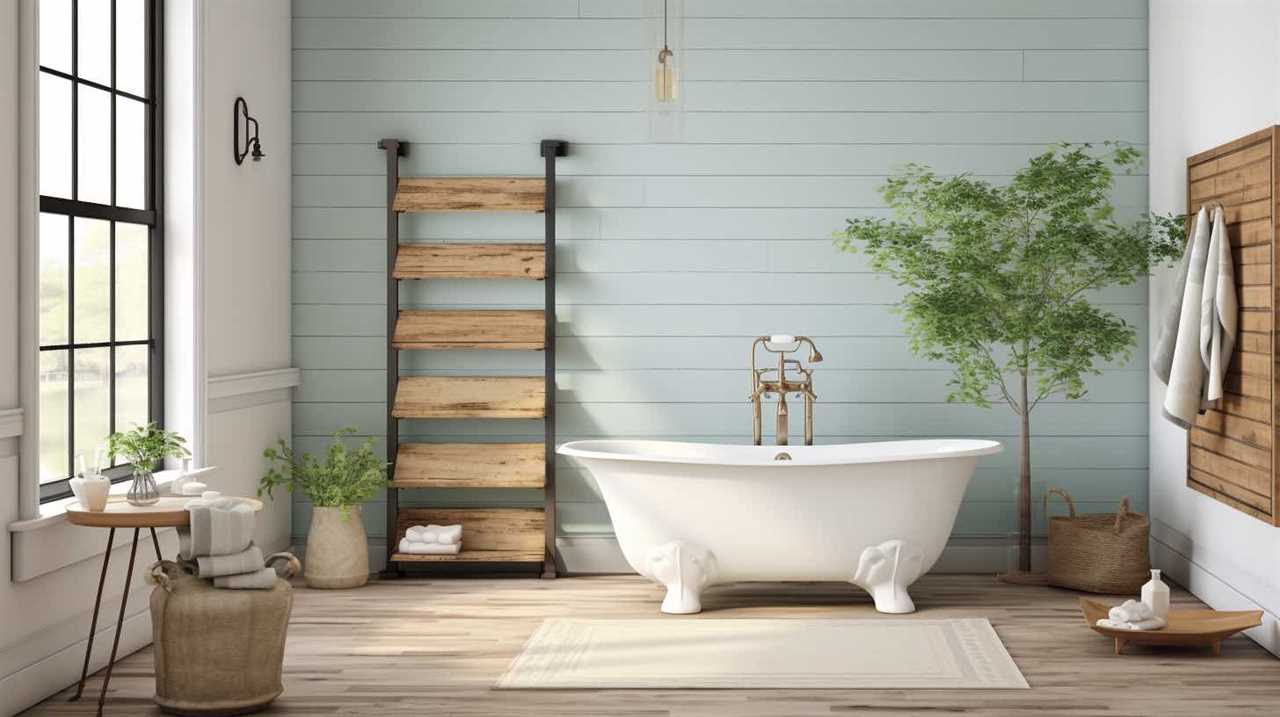
The popularity of powdered wigs and makeup led to the need for a specific space where women could attend to their beauty rituals. The term ‘powder room’ perfectly captured the purpose of this private space.
Over time, the meaning of the term has evolved, and now it refers to a small bathroom or half bath that’s primarily used by guests. Understanding the historical context of powdered wigs and makeup helps us appreciate the origins of the term ‘powder room’ and its connection to fashion trends.
In the next section, we’ll dive deeper into the historical context of powdered wigs and makeup.
Historical Context: Powdered Wigs and Makeup
Now let’s delve into the historical context of powdered wigs and makeup, as it helps us understand the origins of the term ‘powder room’.
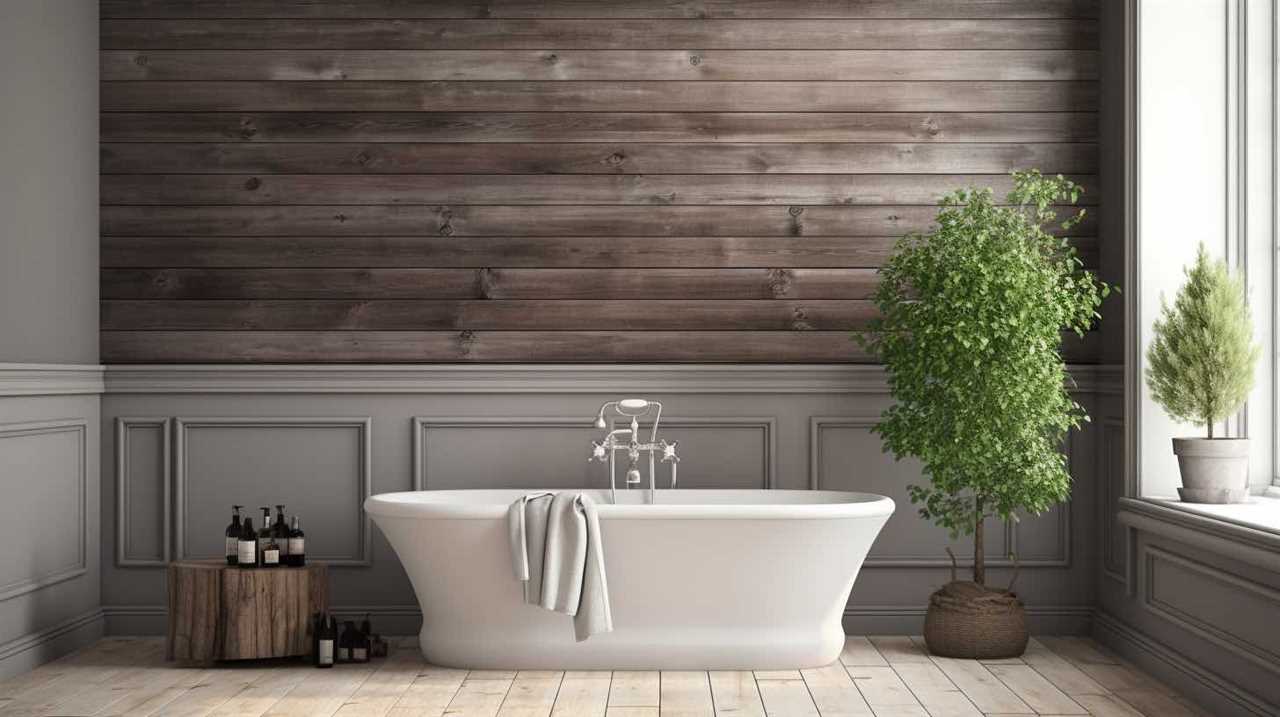
In the 18th century, powdered wigs were a prominent fashion accessory among the upper classes. These wigs were made from human or animal hair and were often white or gray in color. To maintain their appearance, wearers would apply a fine powder, usually made from starch or flour, to the wig. This powder served both practical and aesthetic purposes.
It helped to keep the wig in place and also gave it a fashionable and luxurious look. The application of powder was a meticulous process, requiring a private space where one could carefully apply and touch up their wig. This private space became known as the powder room.
Additionally, during this time, cosmetic practices such as applying makeup were also done in these powder rooms, further adding to the association between the term and personal grooming.
Understanding the historical context of powdered wigs and cosmetic practices helps us appreciate the evolution of the term ‘powder room’ and its significance in social etiquette during that era.

Etiquette and Social Norms in the 18th and 19th Centuries
During this time period, we adhered to strict rules of etiquette and social norms. Gender segregation was a common practice, with men and women often occupying separate spaces during social gatherings. This separation extended to the bathroom facilities as well. Hygiene practices were of utmost importance, and maintaining cleanliness and privacy were essential.
Here are some key aspects of etiquette and social norms in the 18th and 19th centuries:
- Women were expected to have their own designated spaces, such as a powder room, where they could freshen up and attend to their personal needs.
- Men typically had their own separate facilities, known as the smoking room or billiard room, where they could engage in leisure activities.
- It was considered improper for men and women to share the same bathroom space, as modesty and decorum were highly valued during this time.
The Evolution From Powder Room to Half Bath
As we delve into the evolution from powder room to half bath, it is important to understand the historical context and societal changes that influenced this transformation. Over time, there have been significant evolutionary changes in bathroom design and functionality, leading to the architectural adaptations we see today.
| Evolutionary Changes | Architectural Adaptations |
|---|---|
| 1. Introduction of indoor plumbing | 1. Installation of plumbing fixtures such as toilets and sinks |
| 2. Shift towards personal hygiene and cleanliness | 2. Addition of bathing facilities and storage for toiletries |
| 3. Changing social norms and privacy expectations | 3. Incorporation of partitions and doors for increased privacy |
| 4. Desire for convenience and efficiency | 4. Placement of half baths on main living floors for easy accessibility |
These changes reflect the evolving needs and values of society, with a focus on convenience, hygiene, and privacy. The term "powder room" gradually gave way to "half bath" as the purpose and function of the space expanded beyond just applying powder or makeup. Today, the half bath serves as a practical and essential component of residential architecture, accommodating the demands of modern living.
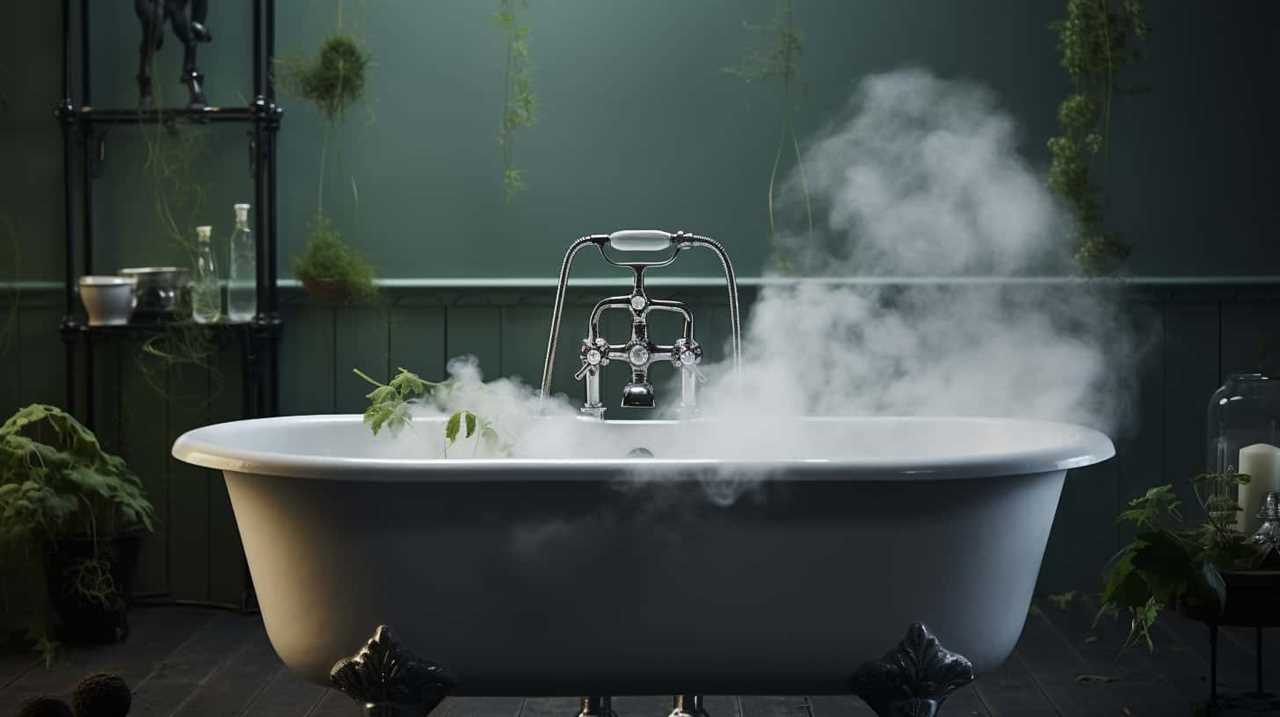
Modern-Day Significance and Usage of the Term
In our modern-day usage, the term ‘powder room’ has been replaced by ‘half bath’ due to the expanded purpose and functionality of the space. The term ‘powder room’ originally referred to a small room where women would go to touch up their makeup or powder their noses. However, as modern decor trends have evolved, bathrooms have become more than just spaces for personal grooming.
Here are three reasons why the term ‘half bath’ is now preferred:
- Increased functionality: Half baths are no longer solely used for touch-ups. They now serve as additional bathrooms in homes, providing convenience and practicality.
- Privacy concerns: With the growing importance of privacy in bathrooms, the term ‘half bath’ conveys a sense of privacy and separation from the main living areas.
- Modern design aesthetics: The term ‘half bath’ aligns with the clean and minimalist design trends of contemporary bathrooms, emphasizing simplicity and functionality.
Frequently Asked Questions
How Is a Half Bath Different From a Full Bathroom?
A half bath is different from a full bathroom because it only has a sink and toilet, while a full bathroom has a shower or bathtub. Half baths are great space-saving solutions for small spaces and offer convenience in home renovation projects.
What Are Some Alternative Names for a Half Bath?
Alternative names for a half bath include guest bathroom and restroom. These terms are commonly used to refer to a small bathroom that only has a toilet and sink, making it convenient for guests.
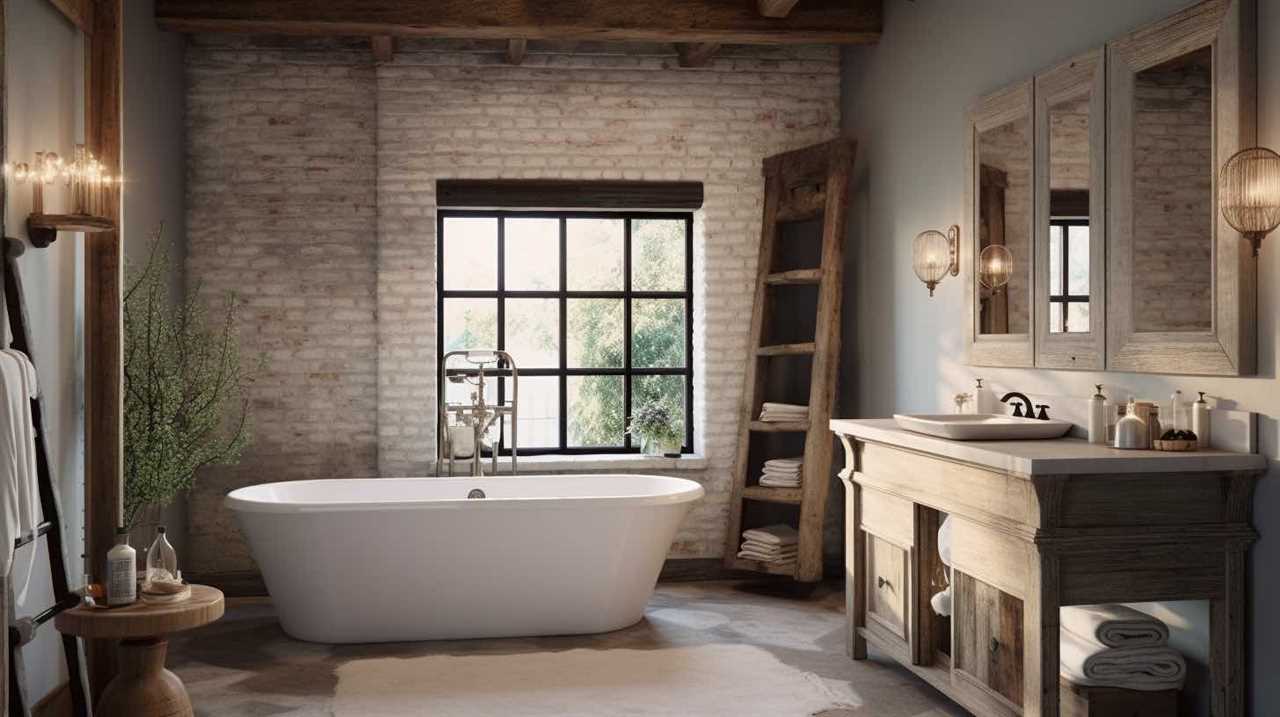
Are There Any Specific Design Elements or Features That Distinguish a Powder Room From Other Rooms in a House?
When it comes to powder room design tips, there are specific elements that set it apart from other rooms in a house. Understanding the history of powder rooms can provide valuable insights into their unique features and design considerations.
What Are Some Common Misconceptions or Myths About the Term ‘Powder Room’?
Common misconceptions about the term ‘powder room’ include its historical origins and gender associations. It’s important to educate ourselves on the true meaning of this term to avoid perpetuating these false ideas.
Are There Any Cultural or Regional Variations in the Usage and Understanding of the Term ‘Powder Room’?
Cultural significance and historical origins of the term "powder room" vary across regions. It’s interesting to explore how different cultures and time periods have influenced the usage and understanding of this term.
Conclusion
In conclusion, the term ‘powder room’ originated from the use of powdered wigs and makeup in the 18th and 19th centuries. It evolved into the modern-day ‘half bath’ as social norms and etiquette changed.
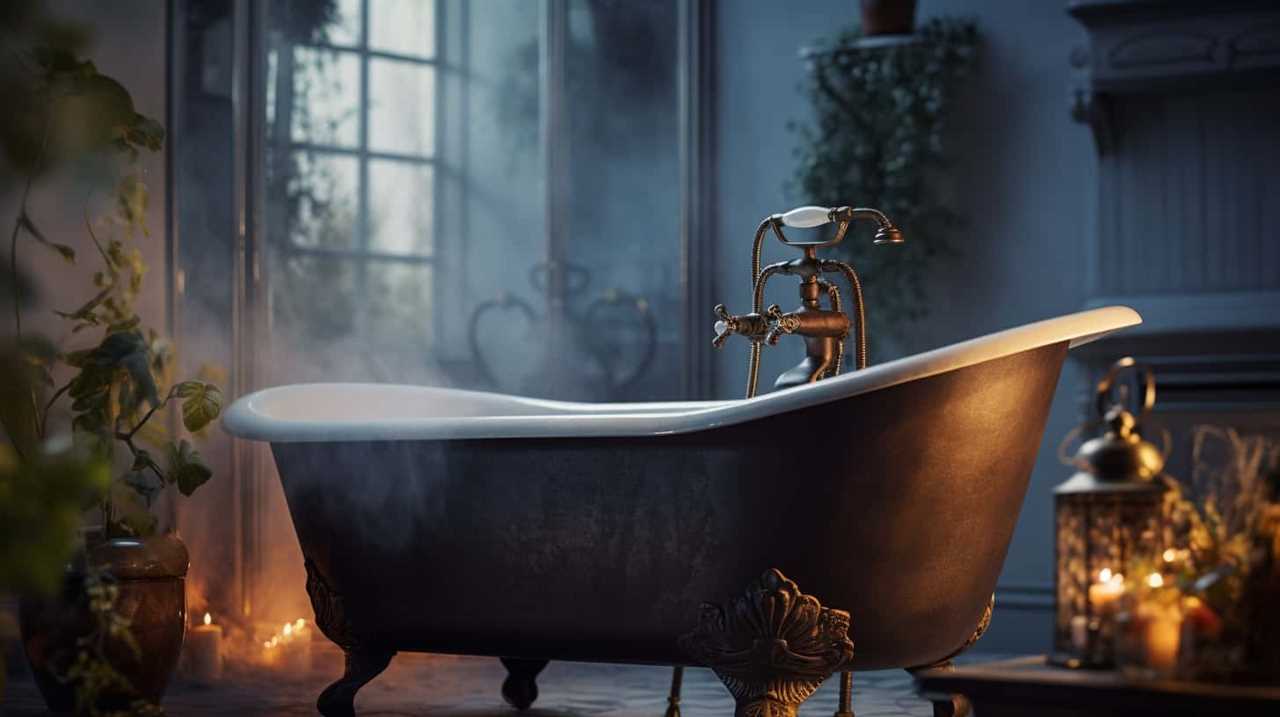
Today, the term ‘powder room’ is still commonly used to refer to a small bathroom used by guests. Interestingly, a recent survey found that 75% of homeowners prioritize having a powder room in their homes, highlighting its continued significance and popularity.










